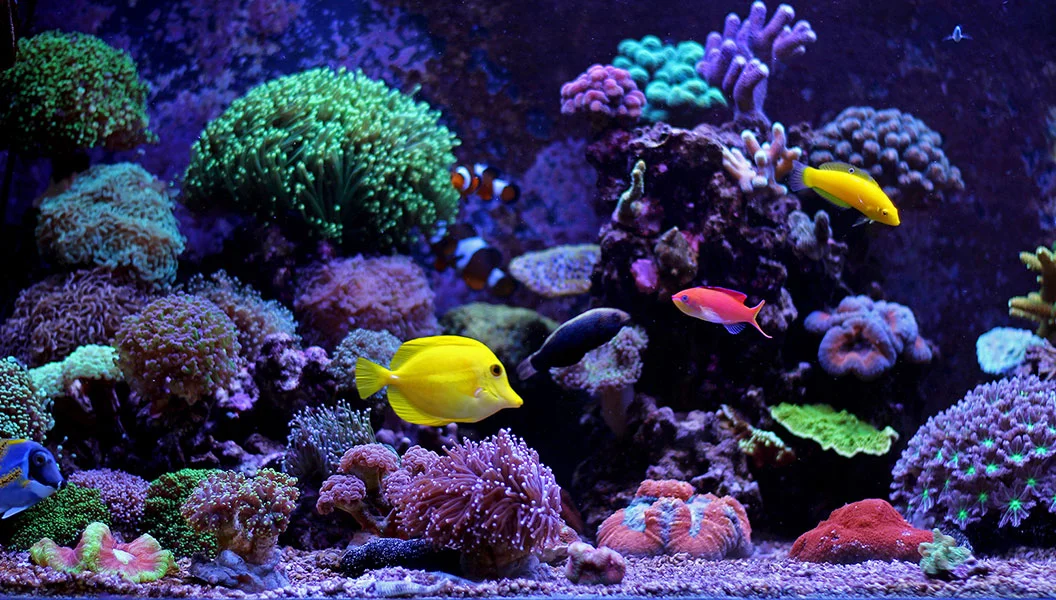You’ve seen saltwater aquariums your whole life and now you want to start one but don’t know where to start. You have many questions like which equipment do I need, how much is this going to cost, and how long is this going to take.
I had the same questions.
Throughout my youth, I had freshwater aquariums but wanted to take it to the “next level” with saltwater. I have listed below what equipment you should get, what to expect while setting it up, and how fast you can get your first fish. This should cover everything on how to start a saltwater aquarium for beginners.
Table of Contents
Key Takeaways
- Saltwater aquarium for beginners is rewarding.
- Unique fish, invertebrates, and coral species.
- Initial setup requires planning and investment.
- Regular maintenance is important to a healthy ecosystem.
Understanding Saltwater Aquariums
Saltwater aquariums try to mimic the same environment that you would find in the ocean. The most common saltwater tank setup for beginners will start with will be a fish only or a mixed reef.
The difference between the two comes down if you are going to add coral to your aquarium. This is important to think about at the start because there are certain invertebrates and fish that are not compatible with certain species of corals.
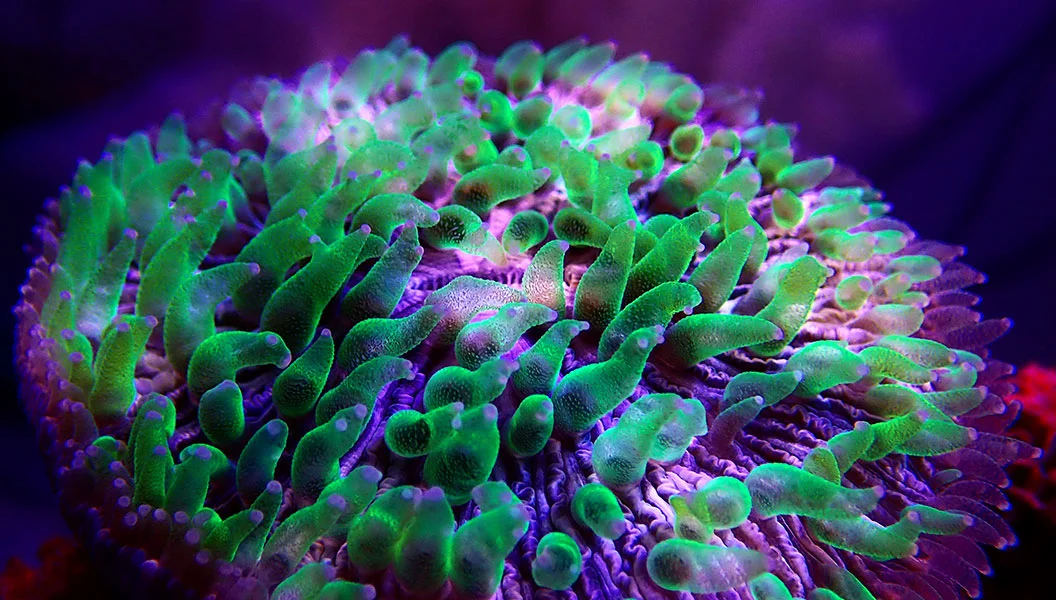
Benefits of a Saltwater Aquarium
A study conducted by researchers from the National Marine Aquarium, Plymouth University, and the University of Exeter found that viewing aquarium displays can have significant positive effects on human health and well-being. Saltwater aquariums provide not only stress reducing benefits but other appealing factors for experienced and beginner saltwater enthusiasts.
- Visual Appeal: The vibrant colors and unique marine life in saltwater aquariums are unmatched by freshwater tanks. Fish like clownfish, tangs, and angelfish are instantly recognized as the “Finding Nemo” fish.
- Therapeutic Effects: Watching fish swim can reduce stress and promote relaxation.
- Educational Value: Maintaining a saltwater aquarium can be educational, offering insights into marine biology and ecology.
Essential Equipment for Beginners
Setting up marine aquariums for beginners shouldn’t be complicated. An aquarium, a pump to circulate water, a heater, and light is all you need to get started. But if you want to have a full ecosystem with coral and sensitive fish and invertebrates, additional equipment will be recommended.
Must Have
- Aquarium Tank: Choose a size for your house and what you can manage. Larger tanks are more forgiving like a 75 gallon.
- Filtration Systems: Essential for maintaining water and removing waste. Options include canister filters, hang-on-back filters, and sump systems.
- Heaters and Thermometers: Maintain a stable water temperature.
- Lighting: Some type of light in the tank but not required to have UV capabilities.
- Test Kits: For the cycle process you will need an Ammonia, Nitrite, and Nitrate test kit. This is a way to check the Nitrogen cycle.
- Auto Water Top-Off: Replenish evaporated water to keep salinity balanced.
Should Have
- Protein Skimmers: Help remove organic waste from the water, improving water quality.
- Lighting: If you plan on getting corals you will need to invest in a high end LED or metal halogen light with spectrum options.
- Powerheads and Wavemakers: Create water movement, mimicking natural ocean currents.
- Test Kits: If you are going to add corals, you will need to test Alkalinity, Calcium, and Magnesium.
Setting Up Your First Saltwater Aquarium
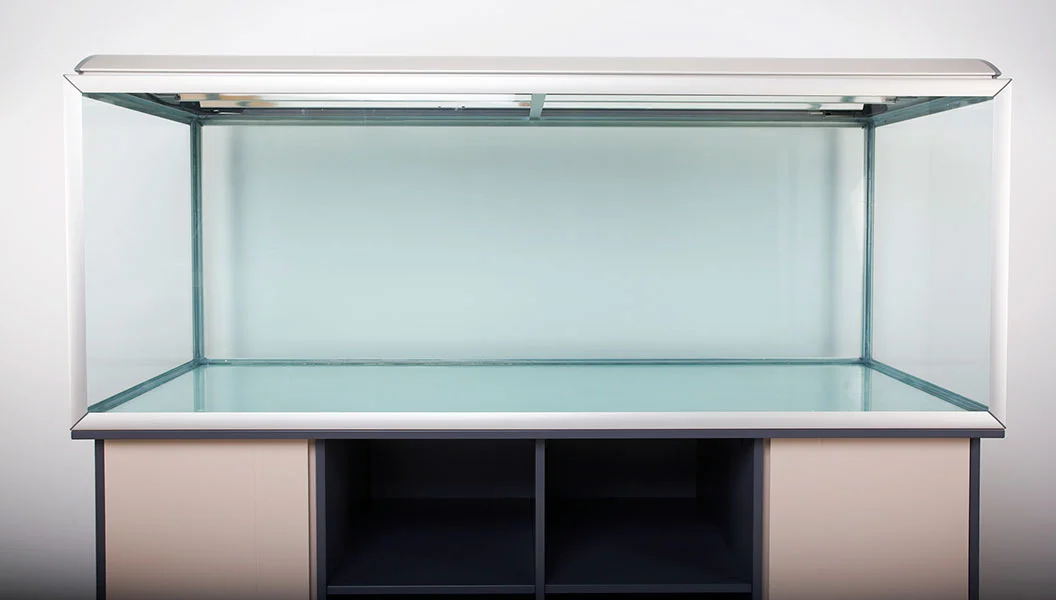
Creating and maintaining a healthy saltwater aquarium requires careful planning. Let’s now walk through setting up your tank. The most important item on this list is “Choosing the Right Location”. Once you get your aquarium set up, trust me, you don’t want to move it. Make sure this placement is going to work in the future. Everything else like cleaning, substrate, saltwater, and equipment is straightforward.
Choosing the Right Location
Selecting the right location for your saltwater aquarium is critical as moving it later can be extremely challenging. Ideally, the tank should be placed in an area free from direct sunlight, as sunlight can promote unwanted nuisance algae growth and cause temperature fluctuations.
Cleaning and Preparing the Tank
Before setting up your saltwater aquarium, clean the tank and equipment thoroughly. Use fresh water without soap to rinse the tank, as soap residues can be harmful. If there are any hard water spots, you can use vinegar to clean them. Vinegar is a safe and effective way of removing calcium deposits without introducing harmful chemicals into your aquarium.
Adding Sand and Rock
The sand and rocks are the foundation of your aquarium’s ecosystem. Start by adding your live or dry rock to the bottom of the tank. This will provide a stable base and structure for your aquascape. I would recommend using an epoxy to hold your rocks together, this will prevent avalanches inside the tank. One downside is that if you need to disassemble the tank for any reason, it can be difficult to break apart.
Rule of thumb for saltwater aquariums is to add 1 – 1 1/2 lbs. of live rock per gallon of water
After placing the rocks, add marine live sand or crushed coral to create the substrate. Using live rock and sand is beneficial as they help establish a natural habitat and initiate biological filtration. This setup supports the growth of beneficial bacteria that break down waste products.
Mixing and Adding Saltwater
You must have the right ratio of salt to aquarium water. To prepare the saltwater, use dry salt mix and RO/DI (Reverse Osmosis/Deionized) water. For the initial setup, fill the tank with RO/DI water and add the salt mix directly to the tank, allowing the pumps to mix the water. Once the tank contains livestock, never add salt directly to the tank. Instead, mix the salt in a separate container before adding it to the aquarium. Use a hydrometer or refractometer to measure the salinity, aiming for a specific gravity of:
- Fish Only Tank: 1.017 – 1.023 salinity
- Mixed Reef Tank: 1.023 – 1.026 salinity
Installing Equipment
Set up the filtration system, heater, and lighting according to the manufacturer’s instructions. Ensure that each piece of equipment is functioning correctly before introducing any fish, invertebrates, or coal to the tank. Ensure the heater maintains a stable temperature and the filtration is circulating the water at a good turnover rate.
A good flow rate for your aquarium should be around 6 – 10 times per hour. If you have a 75 gallon tank, your pump should be running around 750 gph.
Don’t forget to check for water leaks!
Cycling Your Saltwater Aquarium
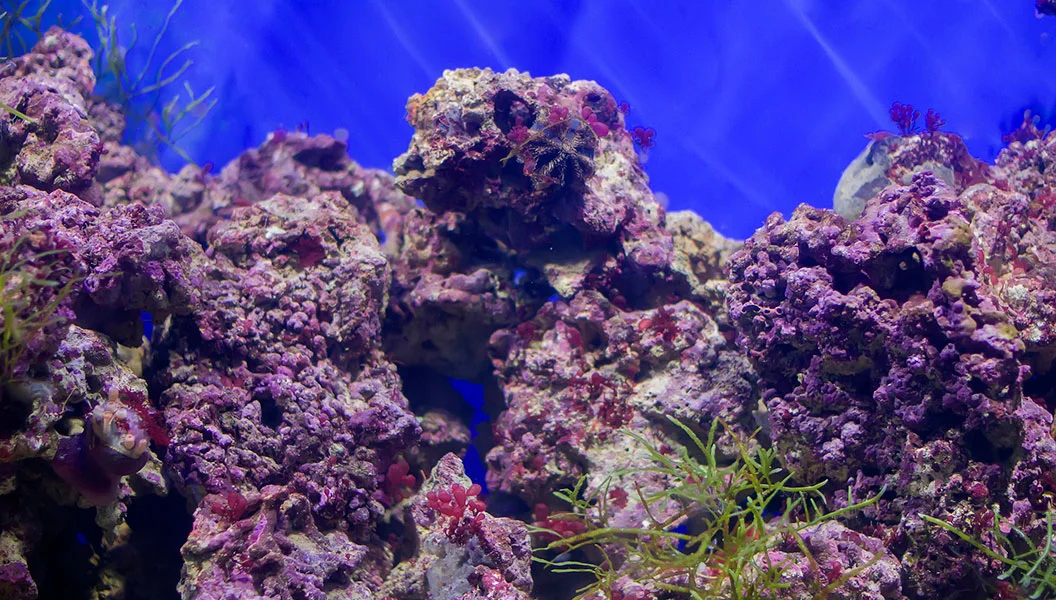
This is the hardest part of your new aquarium. Waiting. Cycling is a critical process that establishes beneficial bacteria and it takes between 30 and 45 days.
Please do not rush this step, it could be deadly to fish and/or invertebrates if they are added during this process.
Speed Up Cycling
To accelerate and start the cycle in a new saltwater aquarium you need to add a source of ammonia. This can be achieved by introducing fish food or pure ammonia to the tank. The addition of ammonia kickstarts the nitrogen cycle, providing the necessary nutrients for the growth of beneficial bacteria.
Nitrogen Cycle
| Phase | Component | Key Points |
|---|---|---|
| Phase 1 | Ammonia (NH₃ or NH₄⁺) | – Fish waste, excess food, decaying matter – Toxic to fish – The start of the nitrogen cycle |
| Phase 2 | Nitrite (NO₂⁻) | – Nitrosomonas – Peaks around day 25 – Toxic to fish |
| Phase 3 | Nitrate (NO₃⁻) | – Nitrobacter – Indicates beneficial bacteria establishment – Less harmful than ammonia and nitrite |
Ammonia is the first component needed in the nitrogen cycle. It is produced by fish waste, excess food, and decaying organic matter. Elevated ammonia levels are highly toxic for fish.
Nitrite is produced by nitrifying bacteria (Nitrosomonas) that convert ammonia into nitrite. This phase starts around day 10 of the cycle. Nitrite is also toxic to fish even at lower levels. Nitrite should drop to near zero by day 30-40.
Nitrate is produced by the nitrifying bacteria (Nitrobacter) that convert nitrite into nitrate. This phase indicates the establishment of beneficial bacteria in the tank. The increase in nitrate signals the completion of the nitrogen cycle.
Signs Your Tank is Cycled and Ready
An aquarium is considered fully cycled and ready for marine life when both ammonia and nitrite levels are consistently at zero and nitrate levels should be within 20-30 ppm. This shows that there are beneficial bacteria to keep the water from reaching toxic levels.
Once these conditions are met, the aquarium environment is stable and safe for introducing fish, corals, and invertebrates. Having a backup plan and mixed water ready is recommended during this stage as there could be an ammonia spike when first adding livestock.
Regular maintenance and testing are crucial for the coming months to make sure your bacteria can keep up with your livestock.
Selecting the Right Fish and Invertebrates
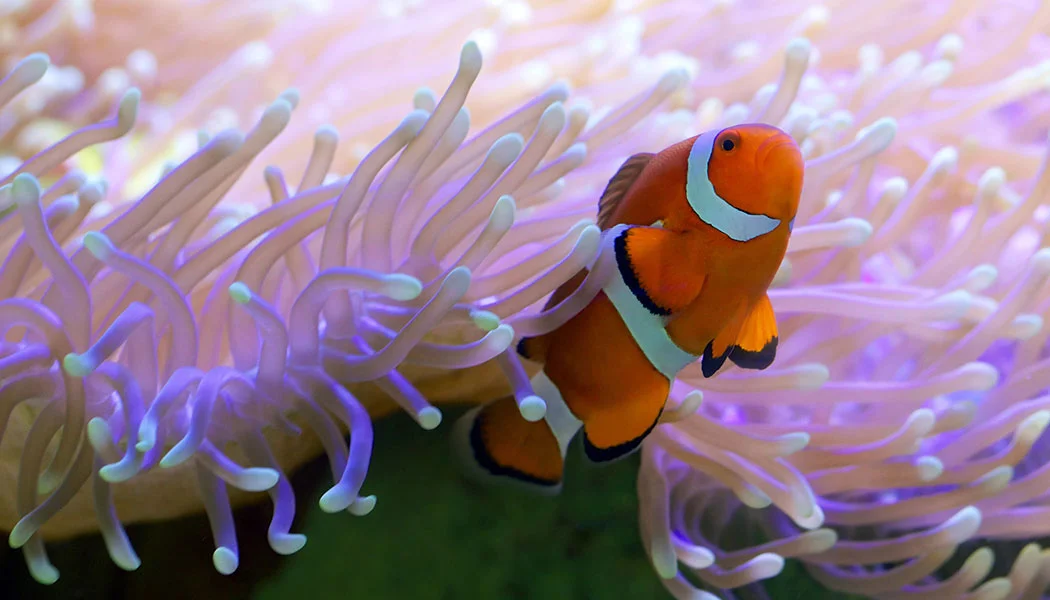
Choosing the right species is essential for a beginner’s saltwater aquarium. After you cycle the aquarium it’s a good idea to start putting a few invertebrates in the talk and monitor you nitrogen cycle. Once you are confident that your levels will stay in a safe space. Start adding a couple of fish at a time and repeat the process. When you start feeding your fish and they are producing waste, this is the true test for your beneficial bacteria.
Try to find a local fish store for your purchases.
Best Beginner Invertebrates
- Cleaner Shrimp (Lysmata amboinensis) – Known for their cleaning behavior, they help control parasites on fish.
- Peppermint Shrimp (Lysmata wurdemanni) – Effective at controlling Aiptasia anemones.
- Hermit Crabs (various species) – Including Blue-legged and Red-legged hermit crabs, they help control algae and clean up detritus.
- Snails (various species) – Including Turbo, Nassarius, and Cerith snails, they are excellent for algae control and detritus cleanup.
- Emerald Crab (Mithraculus sculptus) – Known for eating bubble algae and other unwanted algae types.
- Sea Stars (various species) – Including Serpent stars and Brittle stars, which are good scavengers
Best Beginner Saltwater Fish
- Clownfish (Amphiprioninae family)
- Firefish (Nemateleotris magnifica)
- Gobies (Gobiidae family)
- Cardinalfish (Apogonidae family)
- Blennies (Blenniidae family)
- Chromis (Chrominae subfamily)
- Royal Gramma (Gramma loreto)
- Flame Hawkfish (Neocirrhites armatus)
- Damselfish (Pomacentridae family)
- Coral Beauty (Centropyge bispinosa)
Best Beginner Corals
- Mushroom Corals (Actinodiscus, Rhodactis, and Ricordea spp.)
- Zoanthids and Palythoa (Zoanthus spp. and Palythoa spp.)
- Green Star Polyps (Pachyclavularia violacea)
- Toadstool Leather Coral (Sarcophyton spp.)
- Xenia (Xenia spp.)
- Kenya Tree Coral (Capnella spp.)
- Duncan Coral (Duncanopsammia axifuga)
- Hammer Coral (Euphyllia ancora)
- Torch Coral (Euphyllia glabrescens)
- Finger Leather Coral (Sinularia spp.)
Feeding Your Saltwater Fish
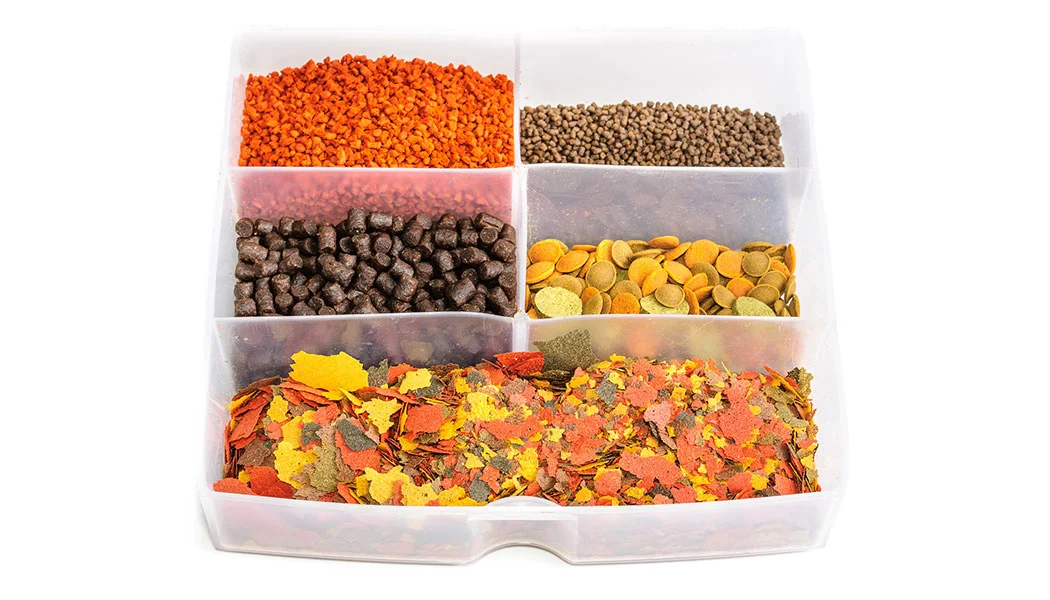
Properly feeding your fish is crucial for maintaining their health. Understanding the various types of fish food, establishing a consistent feeding schedule, and avoiding overfeeding are all key aspects of fish care. Proper diets and healthy water will help prevent common health issues.
Types of Fish Food
Different types of fish food include flakes, pellets, frozen, and live foods.
- Flakes and pellets are convenient and nutritionally balanced for daily feedings.
- Frozen foods, such as brine shrimp and mysis shrimp, provide additional nutrients and variety. This type of food mimics the natural diet of many saltwater fish. This is the type of food I would recommend for a beginner.
- Live foods, including live brine shrimp, can stimulate natural hunting behaviors and offer a nutrient-rich supplement.
Feeding Schedule and Quantity
It is recommended to feed your fish in small amounts once or twice a day, depending on their specific dietary needs and the species in your tank. This feeding routine helps mimic the natural feeding habits of fish.
When feeding your saltwater fish try to only provide what they can eat in 1–3 minutes.
Providing too much food at once can lead to uneaten food in the tank, which can deteriorate water quality and cause health issues.
Avoiding Overfeeding
Overfeeding is a common issue that leads to poor water quality and fish health. To avoid overfeeding, monitor how much food your fish consume within a few minutes. Decomposing food can lead to elevated ammonia levels, which are toxic to fish, or fuel for unwanted algae growth.
Maintaining Water Quality
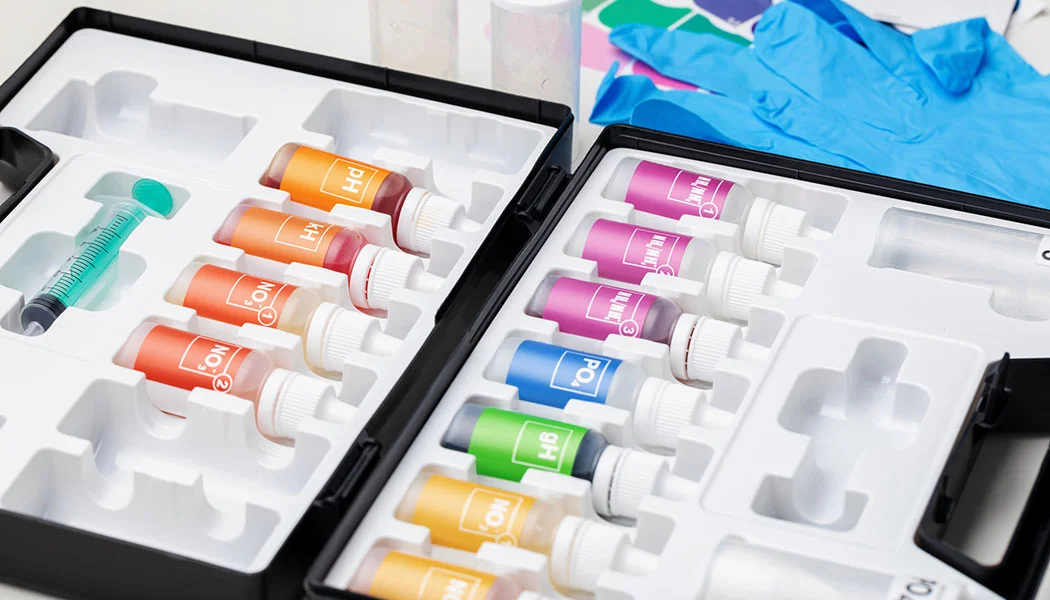
Your water quality in a saltwater aquarium is the most important task in aquarium maintenance. Regular testing of water parameters and regular water changes are the best solution for water quality.
Regular Testing Parameters
Regular testing of your aquarium water is essential. The parameters you need to monitor for the first few months are:
- Ammonia – should always be at zero
- Nitrite – should always be at zero
- Nitrate – generally below 20 ppm
- pH – between 8.1 and 8.4
- Salinity – depending on the type of environment 1.017 – 1.026
- Temperature – 75-80°F
Maintenance & Water Changes
Performing regular partial water changes is part of the saltwater tank life. Water changes help remove accumulated waste products, excess nutrients, and toxins that can build up over time. Water changes can also help replenish essential minerals and trace elements for the health of your fish and corals.
It is recommended to change 10% of the water every week.
Besides partial water changes, your other equipment should be cleaned and maintained on a reoccurring schedule.
Weekly Schedule
- Clean the Glass
- Water Changes
- Protein Skimmer
- Filter Sock
Monthly Schedule
- Water Pump
- Powerheads
- Replace Carbon and Chemical Media
Frequently Asked Questions
What size tank is best for beginners?
A tank of at least 75 gallons is recommended for beginners. Larger tanks are more stable and forgiving than nano tanks.
How often should I clean my saltwater aquarium?
Perform partial water changes of 10% of your total tank water weekly. This helps replenish essential minerals and trace elements in the water.
Can I use tap water for my saltwater aquarium?
Tap water can be used if treated with a dechlorinator and tested for other impurities. Using reverse osmosis deionized water (RO/DI) water is highly recommended as it removes all trace elements that could promote algae growth. Distilled water is a good substitute for RO/DI water.
How do I know if my fish are healthy?
Healthy fish are active, have vibrant colors, and eat regularly. Watch for signs of illness like spots, lethargy, or changes in behavior.
What are the basic items needed to set up a reef aquarium for beginners?
To set up a saltwater tank for beginners, you will need essentials such as a saltwater tank, filter, heater, salt mix, refractometer, and filter media.
How do I know if my saltwater tank is safe for fish?
To ensure that your saltwater tank is safe for fish, you should cycle the tank for 30 days to establish good bacteria. Your test results for ammonia and nitrites, which are toxic for marine life, should show 0 ppm.
What is the purpose of a quarantine tank in a saltwater aquarium setup?
A quarantine tank is used to isolate new fish or corals before introducing them to the main tank. This helps prevent the spread of diseases and/or parasites that could harm other marine life in your aquarium.
How should I start adding fish and corals to my new saltwater aquarium setup?
When adding fish and corals to your new saltwater aquarium, it is essential to acclimate them slowly. This way you can monitor your tank’s water parameters and minimize stress to the fish.
What are some inexpensive ways to set up a small saltwater tank as a beginner?
As a beginner looking to set up a small saltwater tank on a budget, consider purchasing secondhand equipment, or starting with a nano reef setup to minimize costs.
 Mixed Reef Tank
Mixed Reef Tank